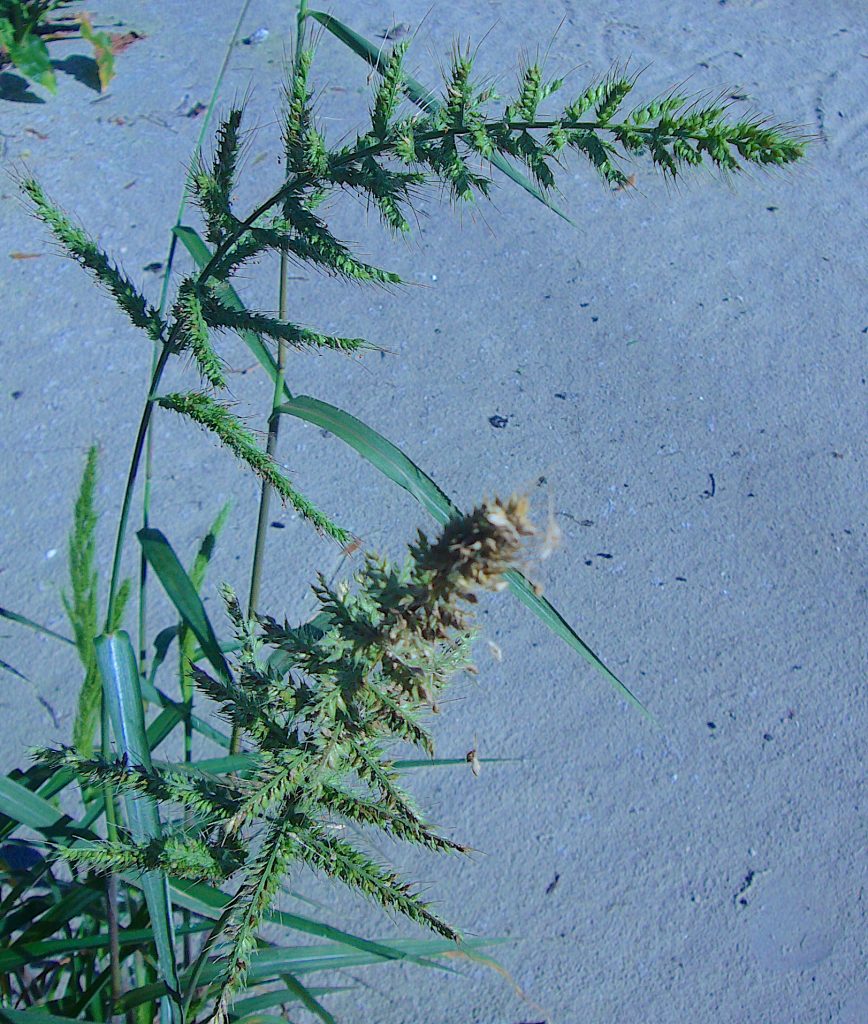
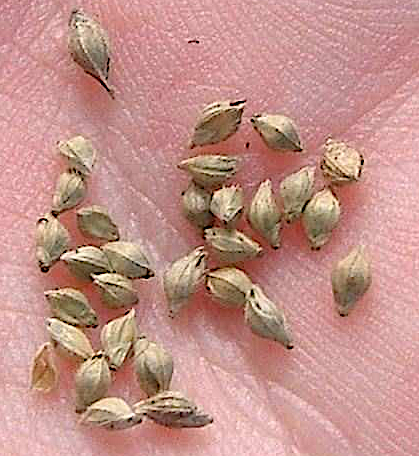
One would think with a name like “Barnyard Grass” one would find the species in barnyards. But no. It is probably safe to say you will rarely find Barnyard Grass in a barnyard. Why? Because Barnyard Grass likes to grow in water, lots of water. You can easily find it in ponds, streams and drainage ditches but not barnyards unless it is growing directly under the roof drain spout in a very low, wet spot. In all my years of foraging I have seen Barnyard Grass once in a barnyard but dozens of times in water. In wet areas look for a tall grass that resembles wheat. The stems will be hairy and usually purple at the base. One easy place to find them locally is in dried up lakes. Often at the still-damp low spot Barnyard Grass will colonize the entire wet spot. Not a native it comes in season at the same time and one can find it seeding now. The grain is a bit more coarse than wheat but can be harvested, prepared and used the same way. It’s native to Eurasia and was promoted in the Southeast as the “Billion-Dollar Grass.” It produces a huge amount of seeds which are enjoyed by ducks, geese and other birds. A related species is now called Billion Dollar Grass, E. frumentacea. You can read about Barnyard Grass here.
Also beginning to fruit is a species that is very invasive in some areas: The Strawberry Guava. During a recent foraging class we spent some time walking through a local neighborhood. We found several edibles, among them the Strawberry Guava. I had one in my yard for about 15 years. Not only are the fruit edible but the dried leaves can be made into a passable tea. One does, however, need to know a little about the species to make the most of the fruit. It’s a little smaller than a ping-pong ball, has tough seeds, and starts out green and hard. As it ripens and softens it will get shades of pink, yellow and red and eventually become dark red and soft, hence the name “Strawberry Guava.” The fruit is tart and sweet, more tart when young, more sweet when older. Despite the name I never tasted a strawberry flavor in any of the fruit. The problem is unless you spray the tree with insecticides the ripe fruit will be full of fly larvae (which you can also view as free protein.) When the fruit is just starting to turn from green to red the rind is too hard for the flies to lay eggs through. But by the time they are soft and ripe they are prime breeding ground. Thus you have a choice, slightly ripe and tart but bug free, or, very ripe and sweet and squirming. To read more about the Strawberry Guava go here.
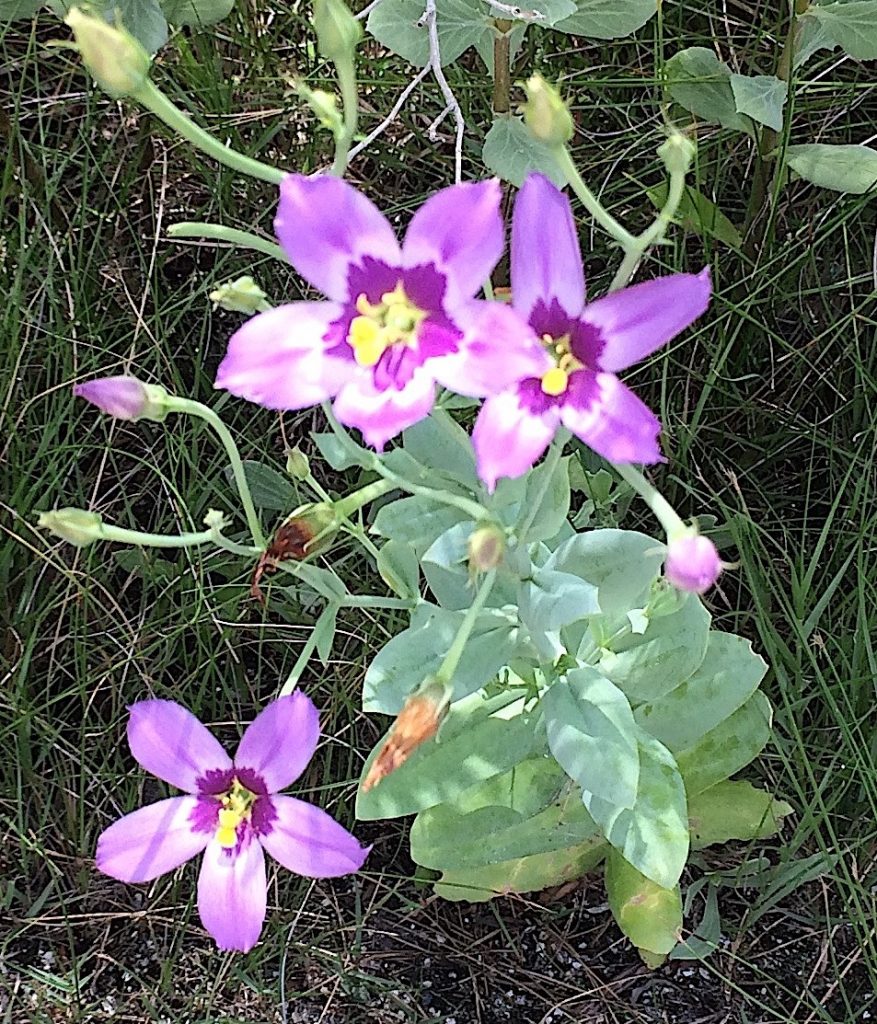
What did we see? During a foraging class in Port Orange we saw this attractive flower. Some research revealed it is Eustoma exaltatum, the Seaside Gentian. There was just one growing. The environment was a coastal hammock but actually quite a distance from salt or brackish water and also rather high and dry (for a species that likes to be wet.) It is found in the southeastern, midwestern and western United States and south to the Florida Keys. It’s also native to the West Indies, Mexico, Central America and South America. The species is salt tolerant and can be grown from seeds. As far as I know it is not edible but leaves steeped in hot water have been used as an eyewash. The plant, including the roots, has also been used as a stomachic (promoting appetite, think “bitters”) and a febrifuge (to reduce fever.) And while not monotypic (the only species in its genus) there are only two plants definitely in its genus (some botanists argue three adding E. grandiflorum, a few say four adding E. maculatums.) Other common names for the species include Prairie Gentian, Marsh Gentian, Catchfly Prairie Gentian. The genus name can be translated into “Beautiful Mouth.” This species is related to the famous Texas Bluebell, Eustoma russellianum. E. grandiflorum is used as a commercial species and is bred extensively in Japan and New Zealand and comes in white, yellow, pink and striped.
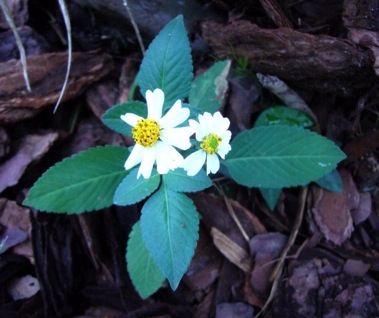
One of the reasons to forage for wild food is to get better nutrition for less cost than agricultural crops or if you’re an herbalist better medicinal materials (For example I never buy lycopene. I use use the fresh arils of the Bitter Gourd and save at least a dollar a day.) Wild plants are in constant competition with their pests, which you can define as bugs and fungus or even lack of water, sun or fertilizer. The plants fight back with antioxidants, polyphenols and the like. Often a wild plant will pack more nutritional punch than its cultivated counterpart. We know this also extends to organic produce, or at least tomatoes. A recent University of Barcelona study shows that organic tomatoes have higher levels of antioxidants than non-organic ones. In our own back yard a species used as a cooked green, Bidens Alba or Bidens Pilosa, has twice as much nutrition as spinach but not the oxalates.
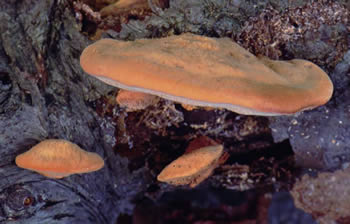
Many like to say there are no toxic polypores, those shelf-shaped fungi growing on dead or soon-to-die trees. They are usually considered non-edible and tough, some are medicinal. However there is one, Hapalopilus nidulans, which is full of the toxin polyporic acid. (The acid is found in other mushrooms but in much lower amounts.) The species is also called the Purple Dye Polypore as it is used for dying and will turn lilac or purple when a few drops of KOH (potassium) or ammonia are dropped on it. Hapalopilus nidulans is referenced as growing in the American “southeast.” The fungi is the same color top bottom and inside. It has also been mistaken for an edible species Fistulina hepatica which does grow in the southeast. In fact it can be harvested and sold in other states. That species bleeds a red liquid and has streaking in the fungal body. It resemble raw liver. Hapalopilus nudilans, however, does not weep or streak and has fine matted hair on top until old. It’s pores are irregularly shaped. Hapalopilus means with a soft tender cap; nidulans means nesting or lying in a cavity. The species is sometimes referred to as H. rutilans (the latter means ruddy or warm red. Rutilant means to have a reddish glow… such as a sun set. )
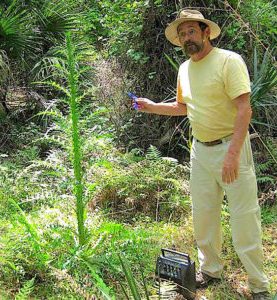
Because of the long holiday weekend there are no foraging classes this Saturday or Sunday. Next weekend I am in South Carolina for an event at Putney Farm. See below.
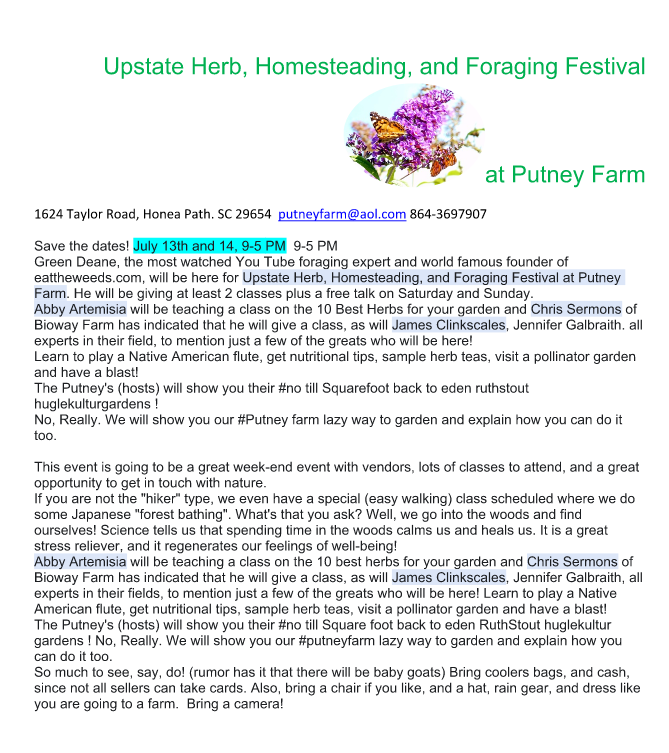
People are signing up for my upcoming foraging classes in South Carolina at the Putney Farm. It’s a two- day event with a lot of offernings. I will be there July 13th and 14th with two classes each day, approximately 9 a.m. and 1 p.m. The address is the Putney Farm, 1624 Taylor Road, Honea Path. There may be a small variation in the schedule because there’s plenty of events to attend besides foraging. My classes are hands-on. We scout around the garden and yard of the farm and surrounding area looking at wild and or escaped edibles and medicinals. For more information or to get on a list for a class email either me at GreenDeane@gmail.com or the Putney Farm at putneyfarm@aol.com. There is also more information directly above in Foraging Classes and at the bottom of this page.

Donations to upgrade EatTheWeeds.com and fund a book are going well. Thank you to all who have contributed to either via the Go Fund Me link, the PayPal donation link or by writing to Green Deane POB 941793 Maitland FL, 32794. Recent upgrades have been paid now the Forum needs work and several function problems need to be fixed specifically the search and categories. The other issue is finding an indexing program or function for a real book. Writing programs used to do it automatically if you designated a term for indexing. Now that most books are ebooks most writing programs do not provide and indexing function.

Want to identify a plant? Looking for a foraging reference? Do you have a UFO, an Unidentified Flowering Object you want identified? On the Green Deane Forum we chat about foraging all year. And it’s not just about warm-weather plants or just North American flora. Many nations around the world share common weeds so there’s a lot to talk about. There’s also more than weeds. The reference section has information for foraging around the world. There are also articles on food preservation, and forgotten skills from making bows to fermenting food. One special section is “From the Frightening Mail Bag” where we learn from people who eat first then ask questions later. You can join the forum by clicking on “forum” in the menu.

All My Videos are available for free on You Tube. They do have ads on them so every time you watch a Green Deane video I get a quarter of one cent. Four views, one cent. Not exactly a large money-maker but it helps pays for this newsletter. If you want to see the videos without ads and some in slightly better quality you can order the DVD set. It is nine DVDs with 15 videos on each for a total of 135 videos. Many people want their own copy of the videos or they have a slow service and its easier to order then to watch them on-line. The DVDs make a good gift for that forager you know especially as spring is … springing. Individual DVDs can also be ordered or you can pick and choose. You can order them by clicking on the button on the top right hand side of this page (if your window is open wide enough.) Or you can go here.
This is weekly issue #362.
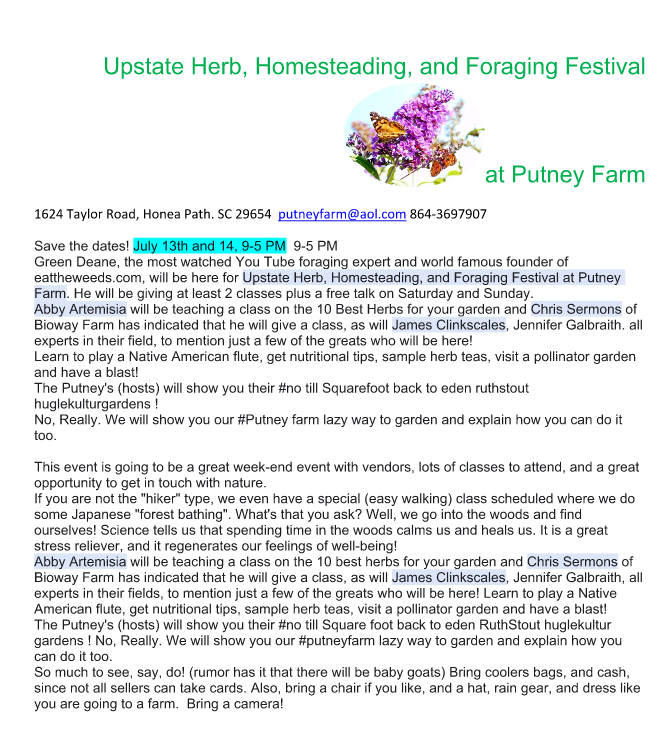

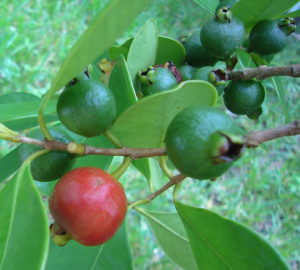

I wish I were with you . Enjoy happy time at the well prepared for Putney Farm Festival . No doubt it’s a good step forwards to guide and improve the life of the younger generation.